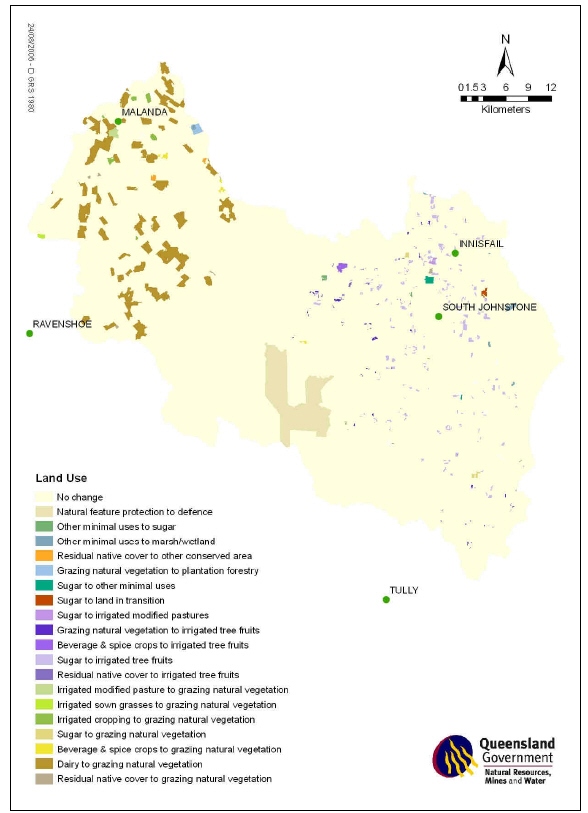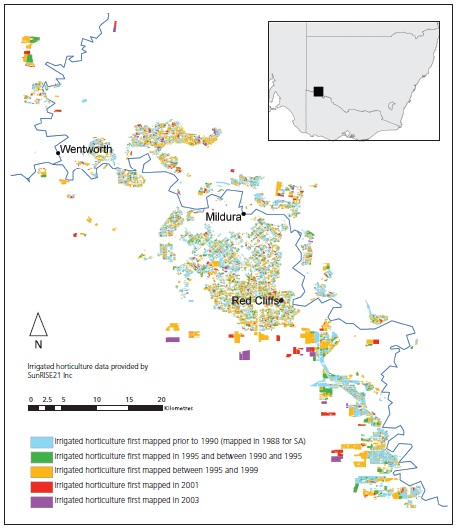Some of the ACLUMP state partners have conducted initial work to address land use change detection and reporting in Australia. Examples of this work are provided below.
Queensland land use change mapping
The Queensland Land Use Mapping Program (QLUMP) regulary produces land use change maps, tables and reports as part of its land use summary reports.

The Queensland method for detecting and mapping land use change makes best use of available spatial information, satellite imagery, aerial photographs, expert knowledge and field survey. It involves successive stages of data collation, interpretation, verification, validation and production of final outputs. The 1999 baseline dataset forms the basis for the updated dataset and is also corrected in the process if errors are found. Areas previously omitted or incorrectly mapped for 1999 are updated as well as areas of actual and potential land use change to create the new dataset. The updated land use map and the improved 1999 map are then differenced to produce a dataset representing land use change (see Figure 1). These changes are also presented as a table showing the areas of land converted to new land uses (Table 1).
Table 1: Summary statistics for land use changes between the years of 1999 and 2004 in the Burdekin River catchment (van den Berg and Jamieson 2006: 12)
Mapping change in the Lower Murray region
Figure 2 shows trends in the expansion of irrigated horticulture around the towns of Mildura and Wentworth in the Lower Murray region of south-eastern Australia. This time-series, 1990-2003, is drawn from 1:25 000 catchment scale land use mapping completed using orthophoto interpretation and detailed property surveys. The mapping reveals a pattern of land use transformation and intensification from dryland cereal cropping and grazing to irrigated horticulture, and a trend to larger, dispersed developments at increasing distance from the river irrigation source.

